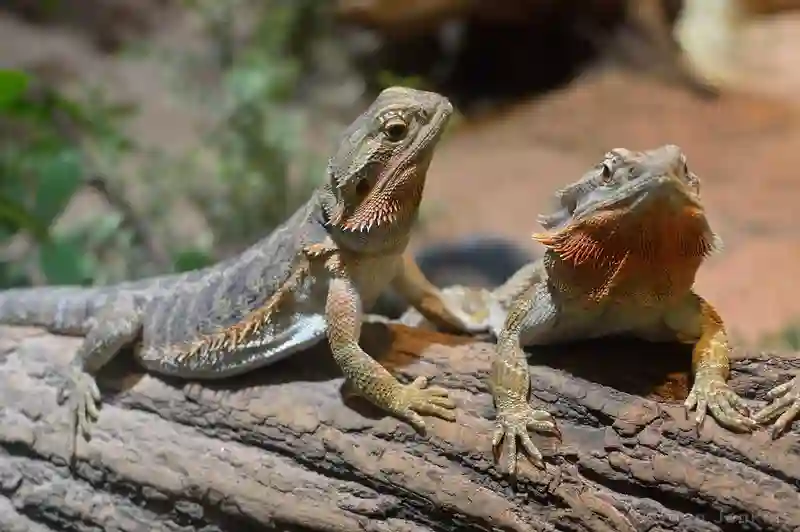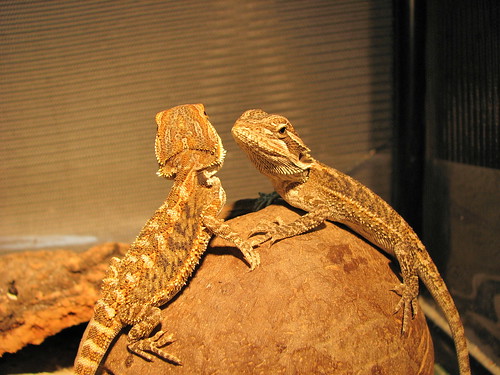Bearded dragons are fascinating creatures that have become popular as pets in recent years. These reptiles are known for their docile nature and unique appearance, making them an ideal choice for anyone looking to keep a low-maintenance pet at home.
However, one question that often arises among bearded dragon owners is how to tell the sex of these lizards. Determining the gender of your bearded dragon can be tricky, but it’s an important step if you plan on breeding or simply want to understand your pet better.
There are several ways to determine whether your bearded dragon is male or female, including examining physical characteristics and observing behavior during mating season. In this article, we’ll walk you through some simple methods for identifying the sex of your bearded dragon so you can take proper care of your pet and ensure its well-being.
Characteristics Of Male And Female Bearded Dragons
Males tend to be larger in size than females and exhibit more aggressive social behavior, while females tend to be smaller and more docile. These differences can also manifest during reproductive cycles, with males displaying head bobbing or arm waving to attract mates.
Age differences between male and female bearded dragons can also play a role in determining sex as they mature. Juvenile dragons may not display clear physical markings until they reach sexual maturity around 1-2 years of age.
Habitat selection can also impact the development of these characteristics, so it is important for owners to provide appropriate environmental conditions for their pets.
Visual Sex Identification
Let’s start with beard color. Male bearded dragons usually have a darker, richer color than females. Hemipenal bulging is another way to tell the sex of a bearded dragon; males will have more noticeable bulging than females.
Beard Color
If you’re looking for ways to visually identify the sex of your bearded dragon, one important factor to consider is their beard color. While not a foolproof method, males tend to have brighter and more prominent beard colors than females.
This can especially be seen during breeding season when male dragons display darker and more intense hues as a way to attract potential mates.
However, it’s important to note that other factors such as cloacal bulges, tail length, and ventral markings should also be taken into consideration when determining your dragon’s gender.
Hemipenal Bulging
Now, let’s delve into another important factor when it comes to visually identifying the sex of your bearded dragon – hemipenal bulging.
This refers to the swelling or protrusion of one or both hemipenes (the male reproductive organs) located within their cloaca.
While this can also occur in females due to various reasons such as constipation or illness, it is more commonly observed in males during breeding season or when they are sexually mature.
It’s worth noting that temperature sexing during incubation can also affect genital development and therefore influence hemipenal bulging.
So if you’re trying to accurately determine your dragon’s gender, make sure to include this aspect alongside other visual cues like beard color and tail length.
Hormonal Testing
Now that we’ve covered the basics of physical sexing methods, let’s dive into a more complex method: hormonal testing. This technique involves analyzing hormone levels in a bearded dragon’s blood or feces to determine their sex.
One way to manipulate hormone levels is through temperature manipulation. By keeping the enclosure at specific temperatures, you can encourage certain hormones and discourage others, potentially leading to observable changes in coloration or behavior.
Another indicator of sex in bearded dragons is ventral pores. Males typically have larger and more visible ventral pores than females, though this method requires careful observation and experience to accurately interpret.
It’s important to note that each sexing method has its limitations and potential for error, so it may be best to use multiple techniques together for the most accurate determination of your bearded dragon’s sex.
DNA Analysis
So, you’re interested in determining the sex of your bearded dragon. While there are several visual clues to look out for like tail colour and ventral scales, DNA analysis is the most accurate method available.
Egg incubation temperature can affect the sex of a bearded dragon, as males tend to develop at higher temperatures while females thrive in lower temperatures. However, this is not a foolproof method and should only be used alongside other methods such as gonadal examination.
To conduct DNA analysis, a small blood sample or cheek swab must be taken from the reptile and sent to a lab for testing. This process will determine if the specimen has XX chromosomes (female) or XY chromosomes (male), providing 100% accuracy.
Incorporating all these methods together ensures that you have determined your beardie’s gender accurately. Remember though, each method may vary in terms of accuracy so it’s best practice to use multiple techniques before coming to any conclusions.
Impact Of Environmental Factors On Sex Determination
Moving on from DNA analysis, it is important to note that the sex of a bearded dragon can also be influenced by environmental factors.
Temperature differences and photoperiod changes during incubation can have an impact on whether a bearded dragon develops as male or female. Incubation methods should be carefully monitored to ensure proper temperature regulation which will result in healthy offspring.
Breeding age is another factor to consider when determining the sex of a bearded dragon. Males tend to develop larger femoral pores and hemipenal bulges earlier than females, so observing these characteristics can help identify gender. Additionally, diet distinctions may play a role in sexual maturity and development.
It’s crucial for breeders and caretakers to understand how environmental factors affect the sex of their dragons since misidentifying their gender could lead to health problems down the line.
By taking into account all potential influencing factors, one can accurately determine the sex of their bearded dragon without relying solely on DNA analysis or physical appearance alone.


